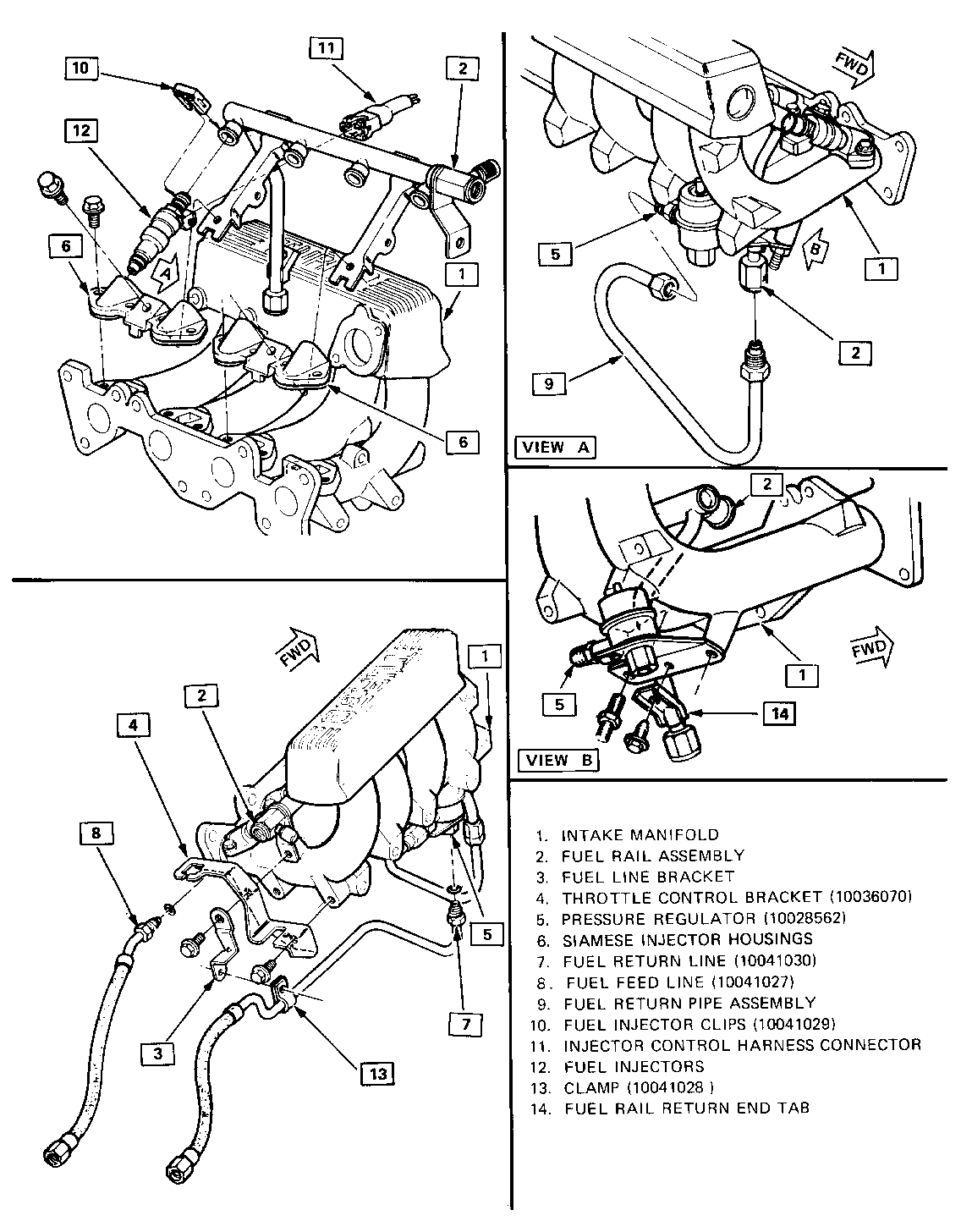MANDATORY ASSEM. SEQUENCE FOR FUEL RAIL ASSEMBLY 1.8L TURBO

Models Affected: All Models Equipped with the 1.8L Turbocharged Engine (Vin Code J)
The purpose of this bulletin is to establish a mandatory assembly sequence for the Fuel Rail Assembly of the 1.8L Turbocharged engine (VIN Code J).
DISASSEMBLY:
------------- 1. Relieve fuel system pressure, as described in Section 6C of the Chassis Service Manual.
2. Disconnect the negative battery cable.
3. Discomect the injector control harness connectors at injectors.
4. Disconnect the fuel feed line and brackets at throttle body end of fuel rail.
5. Disconnect the fuel return pipe at pressure regulator.
6. Disconnect fuel return pipe at fuel rail assembly.
7. Disconnect fuel rail at pressure regulator bracket.
8. Disconnect fuel rail at Siamese injector housings.
9. Remove fuel rail and injectors.
10. Disconnect pressure regulator and bracket from intake manifold.
MANDATORY ASSEMBLY SEQUENCE:
1. Loosely assemble fuel rail and injectors to Siamese injector housings.
2. Loosely assemble fuel pressure regulator (item 5) and bracket to intake manifold.
3. Loosely assemble fuel return pipe assembly.
4. Line up hole on fuel rail return end tab (item 14) with center hole on pressure regulator bracket and torque fastener to 6 N.m (4.5 lb. ft.).
5. Loosely assemble throttle control bracket (item 4) and fuel line bracket (item 3) with fuel rail.
6. Install four (4) fuel injector clips (item 10).
7. Loosely assemble fuel feed line (item 8) and return lines (item 7). Be sure new "O" rings are in place.
8. Install clamp (item 13) - fuel return line to fuel line bracket - 6 N.m (4.5 lb. ft.).
9. Tighten mounting bolts on pressure regulator - 27 N.m (20 lb. ft.).
10. Tighten nuts on fuel feed and return lines - 27 N.m (20 lb. ft.). Use a torque wrench and a backup wrench.
11. Tighten bolts holding fuel rail brackets to Siamese injector housings - 27 N.m (20 lb. ft.)
12. Hand tighten fuel return pipe fittings.
13. Torque fittings to 27 N.m (20 lb. ft.) using a torque wrench and a backup wrench.
14. Connect injector control harness comectors at injectors.
15. Connect negative battery cable.

General Motors bulletins are intended for use by professional technicians, not a "do-it-yourselfer". They are written to inform those technicians of conditions that may occur on some vehicles, or to provide information that could assist in the proper service of a vehicle. Properly trained technicians have the equipment, tools, safety instructions and know-how to do a job properly and safely. If a condition is described, do not assume that the bulletin applies to your vehicle, or that your vehicle will have that condition. See a General Motors dealer servicing your brand of General Motors vehicle for information on whether your vehicle may benefit from the information.
